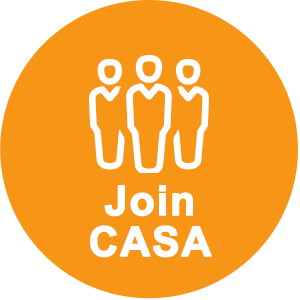Overview
CASA members are producers of recycled water, one of the only reliable, sustainable and drought-proof sources of new water to meet California’s needs. As legislators and regulatory agencies view drought as the new reality, long term solutions are needed. CASA is working to increase the use of recycled water throughout the state through advocacy and outreach to the California Legislature, Congress, regulatory agencies, and non-governmental associations.
Recycled water is municipal wastewater which, as a result of specified treatment, is suitable for a beneficial use. Currently approved uses of recycled water in California include non-potable uses, such as irrigation of turf and landscaping, agricultural uses, dust control and industrial cooling. Recycled water that has received additional treatment can be used to recharge groundwater aquifers and to prevent seawater intrusion into underground drinking supplies.
In the near future, the State Water Board will develop regulations to authorize the addition of highly treated recycled water to drinking water reservoirs. The feasibility of direct potable reuse is currently being studied, with a feasibility report to the legislature due at the end of 2016.
Recycled Water Projects
CASA members are leaders in water recycling. The County Sanitation Districts of Los Angeles have been providing recycled water to recharge groundwater since the 1960s. Orange County Sanitation District has partnered with the Orange County Water District to construct the world’s largest water purification system for indirect potable reuse. Here are just a few of the projects being implemented by CASA members:
- Orange County Groundwater Replenishment System »
- County Sanitation Districts of Los Angeles »
- Irvine Ranch Water District »
- Central Contra Costa Sanitary District »
- Dublin San Ramon Services District »
Hot Topics
Recycled Water Policy
Constituents of Emerging Concern (CEC)
Scientific research is documenting that many chemical and microbial constituents that have not historically been considered as contaminants are present in the environment on a global scale. These CECs are commonly derived from personal care products, medications, pesticides and industrial processes. As part of its recycled water policy, the State Water Resources Control Board convened an expert panel to advise the Board on which CECs should be monitored in recycled water.
Coalition CEC comment ltr 3-1-18
Potable Reuse
In California, indirect potable reuse (IPR) projects involve the application of tertiary treated non-potable recycled water through surface spreading, or the application of full advanced treated purified water for groundwater recharge. Regulations are being developed to allow surface water augmentation upstream of a drinking water treatment plant, using the aquifer or reservoir as environmental buffers that provide additional treatment and response time. In the future, direct potable reuse may further expand potable reuse (PR) to include systems where the purified water is added directly upstream or downstream of a drinking water treatment plant
CASA works in close partnership with the WateReuse Association to advance the use of recycled water for potable uses. Research is a key component of moving forward from indirect to direct potable reuse.
- WateReuse Direct Potable Research Plan »
- History of Potable Reuse in California »
- Potable Reuse Operator Certification White Paper »
- dpr-coalition-letter – October 25, 2016
- WRCA CASA Comments SWA Regs – September 11, 2017
Funding
Securing additional funding options for recycled water projects is a key aspect of CASA’s advocacy efforts. A recent survey of California water recycling projects by CASA and WateReuse California identified over 180 projects being planned across the state that could provide over 660,000 acre feet per year (AFY) once constructed. These projects also exceed $5 billion in estimated total project cost. In this survey, most agencies reported a need for grant and financial assistance for about 50% of the project costs (approximately $2.8 billion). Forty five percent of those responding said their projects were “unlikely or definitely not” going to move forward without state or federal financial assistance.
CASA and its partners successfully advocated for $800 million in very low interest loans made through the State Water Board and the $625 million from Proposition 1 for water recycling funds. Nearly twice that amount is needed for the majority of these agencies to be able to construct these ambitious recycled water supply projects.
- Joint Water Assn. Letter to Rep. Huffman – June 15, 2015
- Joint Letter to SWRCB Request to Extend 1% Interest Financing for Recycled Water Projects – November 24, 2015
- Sen Feinstein Drought Relief Act – Assoc Support Letter – February 9, 2016
- Joint letter to SWRCB re extended 1% int financing for RW – February 11, 2016



 @CASA_CleanWater
@CASA_CleanWater